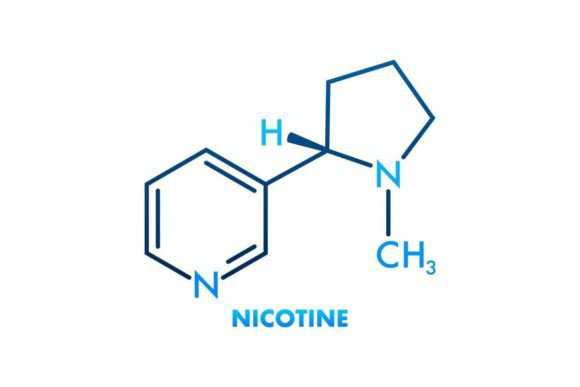How Modafinil Helps Manage Idiopathic Hypersomnia Symptoms
Idiopathic hypersomnia (IH) is a challenging sleep-wake disorder characterized by excessive daytime sleepiness (EDS) that persists despite sufficient or extended nighttime sleep. Those with IH often struggle with unrelenting fatigue, and even naps offer little relief. Modafinil has emerged as a promising treatment option, providing much-needed support for managing IH symptoms. Examining its benefits and the clinical evidence behind its use highlights its role in improving the lives of individuals affected by this condition.
Understanding Idiopathic Hypersomnia
Idiopathic hypersomnia is a chronic disorder that falls under central disorders of hypersomnolence. People with IH often sleep more than nine hours per night yet still struggle with profound daytime sleepiness. This sleepiness can significantly disrupt daily activities, making tasks like working, studying, and socializing difficult.
Unlike narcolepsy, which is another central disorder of hypersomnolence, IH does not involve sudden muscle weakness or “sleep attacks.” Instead, IH presents as a constant feeling of grogginess, which can be unrelenting. Many with IH find their naps unrefreshing, contributing to ongoing fatigue that impacts their quality of life.
Modafinil: A Key Treatment for IH
Modafinil is a wakefulness-promoting medication primarily prescribed for conditions like narcolepsy. It has also been used off-label for IH due to its ability to enhance alertness throughout the day. Modafinil increases dopamine levels in the brain, improving wakefulness without causing the jittery side effects often associated with traditional stimulants.
For individuals with IH, modafinil offers a way to combat excessive daytime sleepiness and maintain focus. Unlike stimulants that can cause dependency or mood swings, modafinil helps to regulate wakefulness in a more balanced way, which is particularly helpful for managing a chronic condition like IH.
Clinical Research Supporting Modafinil’s Effectiveness
Study in Japanese Patients
A well-structured study involving patients in Japan explored modafinil’s impact on those with IH. Participants took either 200 mg of modafinil or a placebo daily, and their sleep patterns were measured using the Maintenance of Wakefulness Test (MWT). The findings revealed that those taking modafinil showed a significant improvement in their ability to stay awake during the day compared to the placebo group.
The study also highlighted that most side effects, such as mild headaches and nausea, were manageable and posed no serious health risks. These findings contribute to modafinil’s growing reputation as a safe and effective treatment for IH.
Improving Daily Functioning
One of the most critical areas of concern for individuals with IH is how excessive sleepiness affects their ability to carry out daily tasks, particularly driving. A separate study assessed how modafinil impacted driving performance in those with IH. The results showed that modafinil significantly reduced the likelihood of accidents, highlighting its practical benefits in everyday situations.
Modafinil vs. Other Treatment Options
While modafinil is highly effective for many IH patients, other treatment options also exist. Some people use sodium oxybate or amphetamines, but these alternatives come with more risks. Sodium oxybate is closely regulated due to its potential for misuse, and amphetamines often cause mood swings and dependency issues.
Modafinil’s ability to promote wakefulness without causing severe side effects or dependency makes it a more suitable option for most patients. Additionally, non-pharmacological approaches, such as maintaining a regular sleep schedule and improving sleep hygiene, can complement modafinil to provide better overall management of IH symptoms.
Addressing Safety and Side Effects
Common Side Effects of Modafinil
Like any medication, modafinil can cause side effects, though they tend to be mild and manageable for most patients. The most commonly reported side effects include headaches, dry mouth, and nausea. These side effects are typically short-lived and may diminish as the body adjusts to the medication.
In the previously mentioned study conducted in Japan, about 58.8% of participants experienced some form of side effect while on modafinil, compared to 27% in the placebo group. Importantly, none of these side effects were considered serious, and no participants had to stop the treatment due to adverse reactions. Additionally, modafinil has not been linked to severe cardiovascular or psychiatric side effects, which are concerns associated with other wake-promoting drugs.
While modafinil has a favourable safety profile, long-term use should be closely monitored by healthcare professionals to ensure that it continues to be effective and that no new side effects emerge over time.
Long-Term Use and Dependency Risk
One of the significant advantages of modafinil over traditional stimulants is its low potential for abuse and dependency. Unlike amphetamines, which can lead to a rapid increase in tolerance and potential misuse, modafinil works by promoting wakefulness in a way that doesn’t create the intense highs and crashes typically associated with stimulant use.
For individuals with IH, this makes modafinil a safer long-term option. However, regular check-ins with a healthcare provider are essential to monitor any potential changes in effectiveness or side effects and to adjust the dosage as needed. Ensuring patients receive the correct dosage can help prevent the development of tolerance, where the drug becomes less effective over time.
Modafinil’s Regulatory Status
Approvals and Off-Label Use
Modafinil has been approved by regulatory agencies like the U.S. Food and Drug Administration (FDA) for conditions such as narcolepsy, obstructive sleep apnea, and shift work sleep disorder. However, it has not been specifically approved for the treatment of idiopathic hypersomnia in the U.S. Despite this, it is commonly prescribed off-label by physicians for managing IH, based on its proven efficacy in similar sleep disorders.
In Europe, modafinil was once approved for IH but was withdrawn in 2011 due to concerns about insufficient controlled clinical data at the time. Despite this, it continues to be widely used as an off-label treatment in various countries, with ongoing research and clinical trials supporting its effectiveness.
Global Perspectives and Usage
While modafinil’s regulatory status may differ from one country to another, it remains a key treatment option for people living with IH around the world. Many patients benefit from its ability to promote wakefulness and manage symptoms, with minimal risks compared to alternative treatments. As more research emerges, modafinil’s status as a treatment for IH may evolve, leading to wider acceptance and formal approvals in more regions.
Practical Tips for Patients Taking Modafinil
Who Can Benefit Most from Modafinil?
Modafinil is particularly beneficial for patients who experience moderate to severe idiopathic hypersomnia, where excessive daytime sleepiness interferes significantly with daily life. Patients who struggle to maintain alertness at work, school, or during important tasks like driving are ideal candidates for this medication.
Before starting modafinil, a thorough evaluation by a healthcare provider is necessary to confirm the diagnosis of IH and to rule out other causes of excessive daytime sleepiness, such as sleep apnea or insomnia. Additionally, individuals with pre-existing medical conditions like heart disease or severe liver dysfunction should be cautious and discuss alternative treatment options with their doctor.
Best Practices for Modafinil Use
Once patients begin taking modafinil, it’s essential to follow a healthcare provider’s instructions carefully to optimize its effectiveness. Typically, modafinil is prescribed at a starting dose of 200 mg per day, though some patients may require adjustments based on how they respond to the medication. In some cases, doses as high as 400 mg per day may be necessary for optimal symptom management.
For the best results, patients are encouraged to take modafinil at the same time each day to maintain consistent wakefulness throughout their waking hours. Patients should also avoid alcohol or other sedatives, which can exacerbate sleepiness and interfere with the medication’s effectiveness.
Combining Modafinil with Lifestyle Changes
While modafinil can significantly help manage idiopathic hypersomnia (IH), combining it with healthy lifestyle choices can further improve its effectiveness. Patients who make adjustments to their daily routines often experience better overall symptom control.
Improving Sleep Hygiene
Good sleep hygiene is essential for individuals with IH. Although those with IH may sleep excessively, the quality of sleep still plays a crucial role in managing daytime sleepiness. Creating a sleep-friendly environment—by minimizing light and noise, maintaining a comfortable room temperature, and following a consistent bedtime—can help improve sleep quality and reduce morning grogginess.
Avoiding stimulants like caffeine in the afternoon and evening, limiting screen time before bed, and establishing a relaxing bedtime routine can all contribute to better overall sleep and complement the effects of modafinil.
Exercise and Physical Activity
Incorporating regular physical activity into daily routines can also be beneficial. Exercise has been shown to improve overall energy levels and may help reduce excessive sleepiness in some individuals. Even light activities such as walking or yoga can make a difference, particularly when done earlier in the day to avoid disrupting nighttime sleep.
By improving physical fitness and maintaining a regular exercise schedule, individuals with IH may feel more energized throughout the day, enhancing the positive effects of modafinil.
Monitoring Modafinil’s Effectiveness
Regular Follow-ups with Healthcare Providers
For patients taking modafinil, regular check-ins with healthcare providers are essential to ensure the medication remains effective over time. These follow-ups allow for adjustments in dosage if necessary and help identify any new or emerging side effects that may require attention.
Tracking symptoms is another helpful way for patients to assess the medication’s impact. Keeping a sleep diary that records daytime sleepiness, nap duration, and the quality of wakefulness can give healthcare providers a clearer picture of how modafinil is working. This feedback allows for more personalized and effective treatment adjustments.
Adapting Treatment Over Time
While modafinil is generally well-tolerated, some patients may experience a decrease in its effectiveness over time as their body adjusts to the medication. If this happens, healthcare providers may adjust the dosage or explore additional treatments to manage IH symptoms. Combining modafinil with other strategies, such as cognitive behavioural therapy (CBT) for sleep disorders, may also enhance outcomes in some patients.
In some cases, a temporary break from modafinil may be recommended to reset the body’s response to the medication, though this should only be done under medical supervision.
Patient Stories: Real-Life Experiences with Modafinil
Finding Balance with Modafinil
Many patients with idiopathic hypersomnia report significant improvements in their daily lives after starting modafinil. For example, some individuals who previously struggled to stay awake at work or during social activities find that modafinil helps them remain alert and engaged throughout the day. The ability to focus, think clearly, and participate in daily life can lead to a better overall sense of well-being.
However, the effects of modafinil can vary between individuals. Some patients may experience sleep inertia, a state of grogginess upon waking, even when using modafinil. In such cases, healthcare providers may recommend taking modafinil at different times during the day or adjusting the dosage to better suit the patient’s needs.
Modafinil’s Impact on Quality of Life
For many with IH, modafinil has been a life-changing medication. Beyond simply staying awake, modafinil helps people regain control of their lives. The ability to drive safely, work productively, and participate in social activities without the constant fog of sleepiness allows many patients to enjoy a fuller, more engaged lifestyle.
However, it’s important to acknowledge that modafinil is not a cure for IH. Rather, it helps manage the symptoms, making daily life more manageable. For those using modafinil, the goal is to achieve a balance between wakefulness and maintaining a high quality of life.
Conclusion
Modafinil has proven to be a valuable treatment option for individuals with idiopathic hypersomnia, offering a way to manage excessive daytime sleepiness without the risks associated with other stimulants. Through clinical studies and real-world experiences, modafinil has consistently demonstrated its ability to improve wakefulness, enhance daily functioning, and reduce the risks posed by constant drowsiness.
While it is not without side effects, modafinil’s overall safety profile makes it a preferred choice for many IH patients. When combined with lifestyle changes such as good sleep hygiene and regular exercise, modafinil can offer a comprehensive approach to managing the symptoms of IH.
As research into idiopathic hypersomnia and its treatment options continues, modafinil remains a beacon of hope for those living with this challenging condition. It provides a way to reclaim daytime wakefulness and engage more fully with the world around them, improving both functionality and quality of life.








